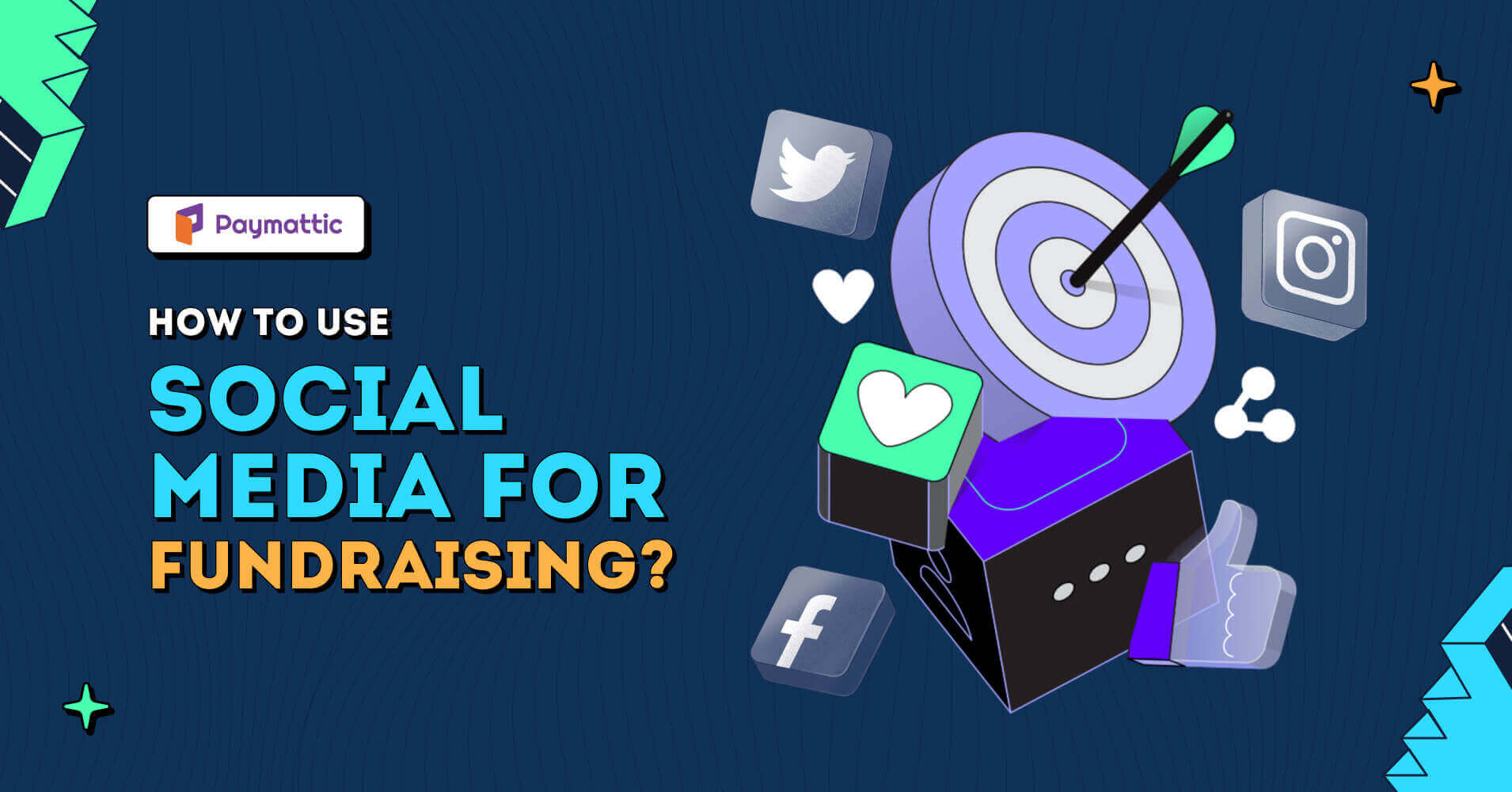
How to Use Social Media for Fundraising?
Table of Content
Download Paymattic – it’s Free!

Subscribe To Get
WordPress Guides, Tips, and Tutorials
We will never spam you. We will only send you product updates and tips.
Remember Chris Kennedy, a pro golfer who tweeted a dare in 2014 about the #IceBucketChallenge to three of his friends? The challenge was to dump a bucket of icy water on the head within 24 hours or support the ALS by donating $100.
This challenge gained immense popularity worldwide, resulting in the collection of $115 million in donations and facilitating the development of innovative treatments for the disease.
The Ice Bucket campaign set a benchmark for how to use social media for fundraising.
So, if you doubt using social media for fundraising, that’ll provide you with a clear picture.
It’s rare to encounter individuals who aren’t active on social media nowadays. Therefore, not only for fundraising but also for any type of social campaign, neglecting the use of social media means missing out on a significant portion of the audience.
So, this article will be dedicated to exploring how to use social media for fundraising and taking your donation process one step ahead.
Impact of using social media for fundraising
The impacts of using social media for fundraising purposes are beyond our imagination. Its reach is limitless. As online donations are increasing, social media can be a remarkable addition to your fundraising strategy.
29% of online donors consider social media as the best communication platform that inspires them to donate.
-Global Trends in Giving Report
You can utilize social platforms for any type of nonprofit organization’s goal.
Reaching more people
When it comes to reaching more people and broadening your audience, there is no match for social media. People of all ages have an active social media account.
Statistics show that there are 4.95 billion social media users worldwide, which is more than 60% of the global population. So, it’s crystal clear why you need to use social media for nonprofit organizations.
It’s a cost-effective platform for any nonprofit to get connected with its supporters.
You’re allowed to create numerous accounts on Facebook, Instagram, and X, free of charge. You can post multiple times regularly or weekly whenever you want to grab attention without getting charged.
People often pass their time using mobile devices and scrolling from one social platform to another. So, it’s not a secret why social media is the best method to reach people.
“71% of nonprofits worldwide agree that social media is effective for online fundraising.”
Where the organic reach makes a positive impact on your fundraising process, paid advertising can expand it to the next level. Paid ads are often less expensive and a great source for reaching a larger audience.
You may leverage your donors from social ads by targeting them based on their location, age, gender, interest, and social engagement.
Also, consider implementing an ad exchange to display your ads across different digital platforms, including websites, mobile sites, and mobile apps.
This approach will expand your reach and attract potential donors by leveraging diverse online spaces where your target audience may be active.
Engaging donors
Another big reason for using social media for fundraising is to engage your donors. If you can’t engage them, you’re not doing everything right.
Do whatever you need to do to turn your one-time donor into a regular donor.
Remember, it’s more important to retain existing donors than acquire new ones. A nonprofit organization with a good donor retention rate is more likely to have stable and sustainable funding for its programs and initiatives.
You can share pictures, videos, or any interesting story about your fundraising programs. That’ll make them feel more connected. Always try to share user-generated content to encourage them to be involved.
It’s also a part of the social media fundraising ideas, and it gives you a chance to have a conversation with your supporters.
Recruiting volunteers
Nonprofit organizations often face difficulty holding on to volunteers. Because it’s a nonpaid duty, and people do that out of their love and responsibility to society. So you can’t expect them to stick around forever.
That’s why you need a replacement for the lost volunteers. You always need to be in the process of engaging new and young blood in the organization.
Social media gives you the opportunity and provides unique ways to find new volunteers.
By sharing social posts and stories, you can engage with people and make them interested in joining as volunteers.
A simple post about “looking for volunteers” on social media can make a significant impact on recruiting new volunteers as well as your overall social media fundraising campaign.
Social Media Fundraising Strategy for Nonprofits
Sometimes no strategy works like the best strategy for fundraising. Let’s consider Chris Kennedy’s Ice Bucket Challenge again. He just gave a dare to his three friends. He didn’t think that this would go wild and end up raising this much money.
But things won’t work the same way every time. Not every challenge will go viral. So you’ve got to make your own strategy to use social media for fundraising. You’ve got to find out what clicks with the audience.
Pick the right social media for nonprofit fundraising
Before making any strategy for social media fundraising, the first thing you need to do is pick the right one. There are a number of social media platforms to interact with.
Facebook:
With around 3 billion active users, Facebook holds the first position among all social media. You’ll get to reach people of all ages and demographics there. You can post pictures, videos and go live to reach your targeted donors. You can also create events and share the story behind them for your social media fundraising campaigns.
Most nonprofits are now recognizing the importance of Facebook. Considering these facts, Facebook has introduced a dedicated tool for fundraisers.
Here, a donor can find the fundraising events that are running worldwide. They can choose the category as well. There are events available for nonprofits under 501(c)3 registration.
Facebook also filters popular fundraising campaigns for contributors and makes it easier for them to create an instant impact.
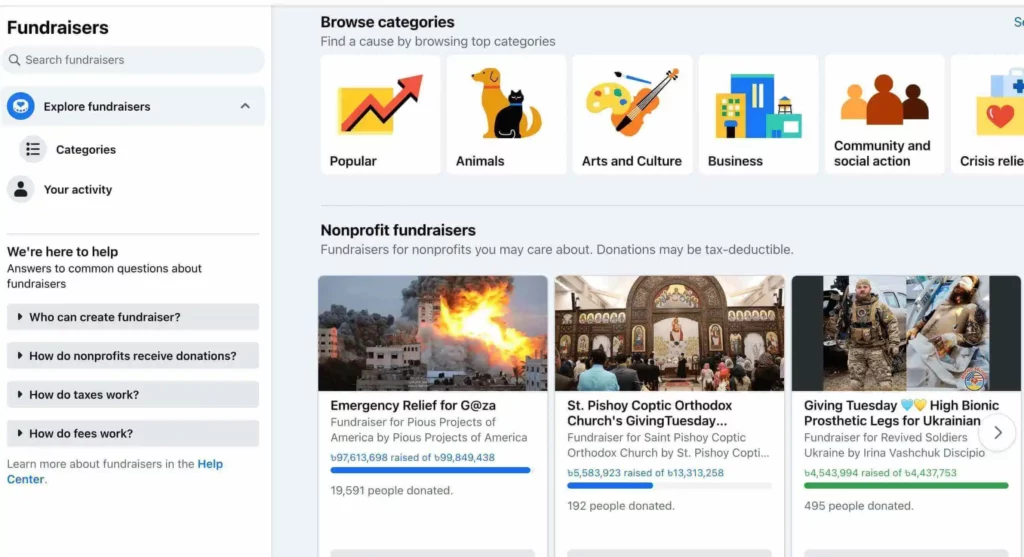
You can easily take advantage of Facebook fundraisers as an organization or individual by following a few steps.
Twitter/X:
“X,” formerly known as Twitter, engages around 330 million users per month. It’s a more targeted platform. It has a maximum text length of 280 characters. So, there is no time or space for sharing your story.
The best use of ‘X’ is a direct donation request. It’s a great platform to connect with and build relationships with the organizations that are working in the same category—the people who care for your cause.
Many professional nonprofit Twitter accounts work for charity to make a positive change. You can follow them and get closer to them to be a small part of their broad network.
You can also use the trending #hashtags, relevant to your fundraising campaign to grab the attention of users.
The best practice for using Twitter for nonprofit fundraising is to create concise, sweet, and noticeable content.
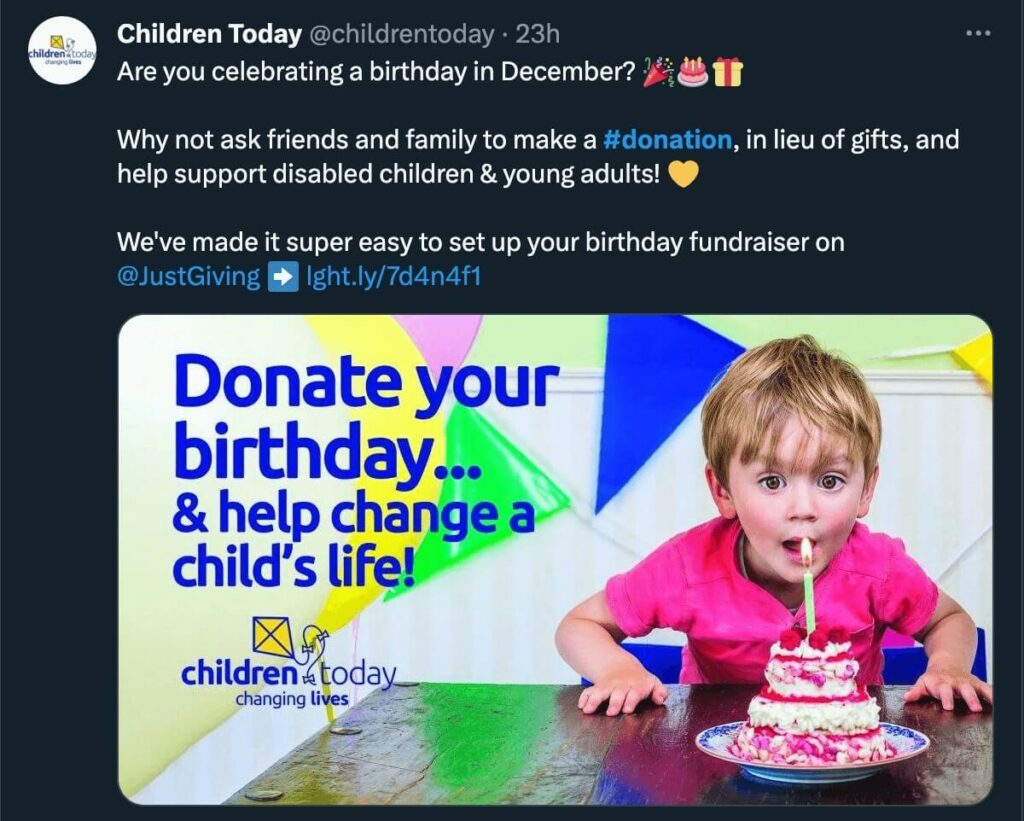
LinkedIn:
There is no better professional platform than LinkedIn. If you want to build an environment of professionals who regularly donate, you must utilize LinkedIn.
More than 310 million professionals are active on LinkedIn each month, networking with other professionals and organizations by reacting, commenting, and sharing their content.
There are many groups available in your niche to join and connect with your surroundings.
One of the most useful benefits of using social media for fundraising, especially LinkedIn, is that it inspires corporate donations. Donations from the corporate sector help your organization gain sustainability.
Instagram:
Instagram is another popular platform where you’ll find audiences ranging from 16 to 34 years old. It gives you a great opportunity to connect with younger supporters.
The traditional appeal for nonprofit fundraising might not work for young blood. There, you’ll need to be creative to catch their attention. Like every social media platform, Instagram has some versatility as well.
It’s a visual-based platform. So, you need to share your stories in carousels and short videos.
Not only for raising funds, Instagram is also beneficial for attracting young volunteers to your organization.

Set a SMART goal
To make any social media fundraising campaign successful, you must set up a SMART goal for it. SMART stands for Specific, Measurable, Achievable, Realistic, and Timely. It’s about envisioning your target and the journey you choose to get there.
Let’s break down the SMART goals for you.
Specific: You’ve got to be well-defined and specific about your next goal. In particular, “acquire 100 new donors” or “improve donor retention rate by 20%,” etc. Setting up a campaign to gain volunteers won’t raise money. So, specify what you want from the campaign.
Pro tip: Calculate your donor retention rate and unlock the unique strategies to improve it.
Measurable: Always make sure that the goal you’ve set is easily measurable. Don’t make it complicated by setting up multiple targets. “Acquire 100 new donors” is a simple and easily quantifiable goal.
Achievable: Set a goal that is achievable. Don’t put yourself on any unrealistic target. Look at your capability and the resources you’ve got before making a target.
Setting a fundraising goal of $1,000,000 might come off as a bit comical if your previous fundraising record peaks at $20,000.
Realistic: You already know that you’ve got to be real with your fundraising goal. Setting up an unrealistic goal will end up frustrating you. An achievable and realistic goal will always push you forward.
Dream big, but anchor yourself securely to the reins of reality.
Timely: Set a timeframe to reach a goal. If you’re planning to “improve your donor retention rate by 20%,” ask yourself how long you want to stick to the goal. When will you reach it?
Let’s check out some good examples:
- Improving retention rate by 20% by December 31, 2023
- Recruiting 10 new volunteers by the end of July
- Acquiring 100 new donors by the end of the campaign
Subscribe Newsletter
Subscribe to our newsletter for updates, exclusive offers, and news you won’t miss!
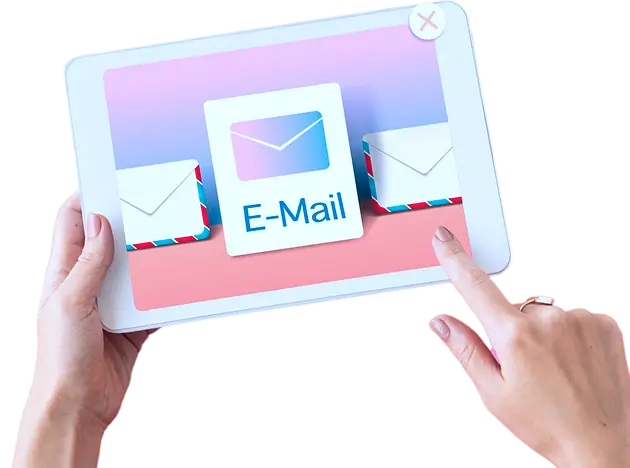
Make it visual
When you’re using social media for nonprofit fundraising, making it visual is one of the key points. Starting from behind the story to reaching your fundraising goal, always try to visually share the journey with your donors.
Sharing a simple picture of your fundraising campaign or a short video may help you gain more credibility with your contributors.
The more transparent you make the process, the more likely donors are to give.
Be responsive
Be respectful and responsive to your supporters. Donors appreciate acknowledgment. Remember, they’re the reason you had success.
So after each social media fundraising campaign, whether it met your expectations or not, you should write a thank-you message and find ways to recognize specific individuals whenever possible.
You can make them feel good just by liking their comments and replying to them quickly. Also, if someone texts you out of curiosity, respectfully reply to them.
Inspire them to mention your organization or campaign on their social media posts and take the relationship one step further by sharing or retweeting it.
These will let them know that, apart from raising money, you’re also being involved and responsive to them.
Collaborate with influencers
Never underestimate the power of social media influencers. They’re no less than any celebrities nowadays. Influencers are typically people who have a large social media following and are respected within their field or industry.
If you’re a small nonprofit organization and looking to expand your donor base, reaching out to an influencer might be a great option.
Use the analytics to find a motivator within your network and try to convince him with your story or goal. There will be a number of influencers who are always ready to do charity work for free.
Don’t trap yourself into finding someone with a massive fan following. Typically, they’re hard to reach out to. Try to connect with a micro- or mid-level influencer. (Although if Shakira is ready to give a shoutout, there is nothing better than this.)
Put it on your social media fundraising ideas and try it once you feel you’re ready to approach for a collaboration.

Use a social media plugin to improve credibility
Whenever a donor makes a donation, they always have a trust issue in mind. Where they donated, where the money will be used, whether the organization is legit, etc. To clear up these confusions, you may use a social media plugin.
WP Social Ninja is a top-rated WordPress plugin for embedding social feeds, social chats, reviews, etc. on your website.
You can easily fetch all the reviews you get from your donor base on your WordPress website. This will help you earn immense credibility with the contributors.
Using their social chat widget, link Messenger/Whatsapp/Telegram chat to your nonprofit website. So that people can ask questions or clear up their queries effortlessly.
Most nonprofit organizations make videos of their fundraising programs or share stories behind the scene. These videos were uploaded mostly on social media or YouTube.
WP Social Ninja offers a great feature for embedding these videos directly on your website.
It improves the social evidence of your organization.
Wrapping up
In the realm of the digital world, non-profit organizations that use social media for fundraising always keep themselves up-to-date. It’s no secret that organizations don’t hesitate to run paid ads now in order to reach the largest number of people.
The legendary #IceBucketChallenge showcased the boundless potential of platforms like Facebook, Twitter, LinkedIn, and Instagram. These channels not only reach diverse audiences but also engage donors, recruit volunteers, and drive ambitious fundraising.
Join the thousands already enjoying Paymattic Pro!




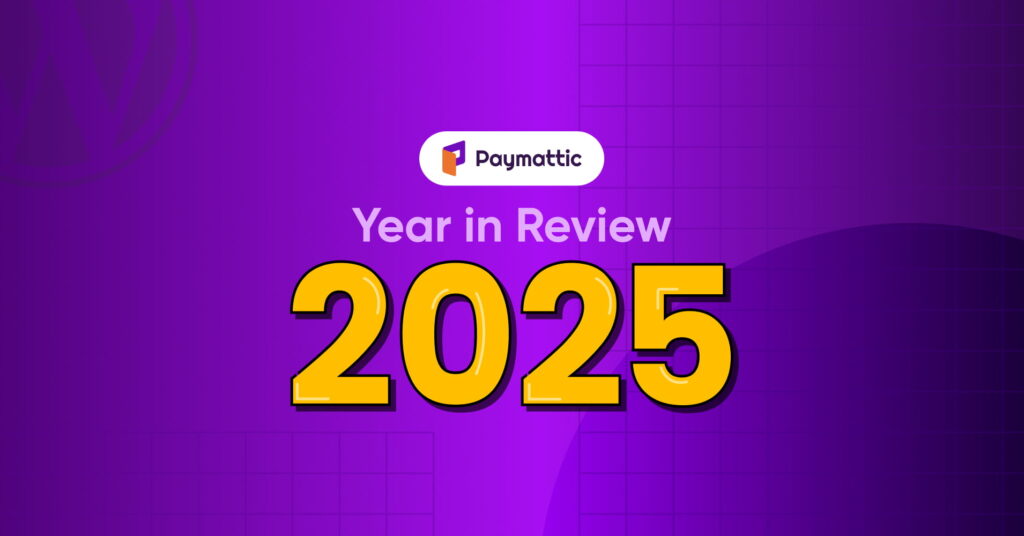

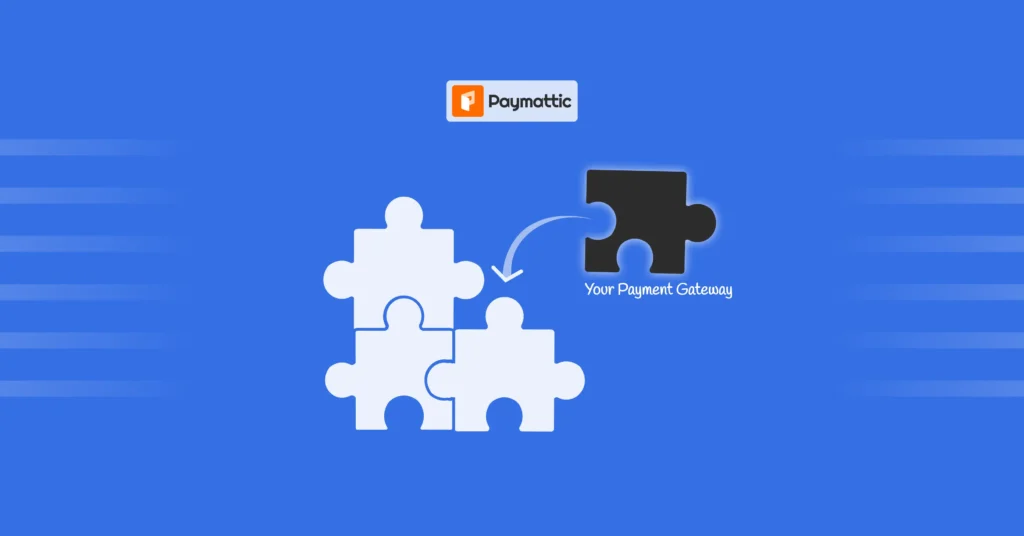
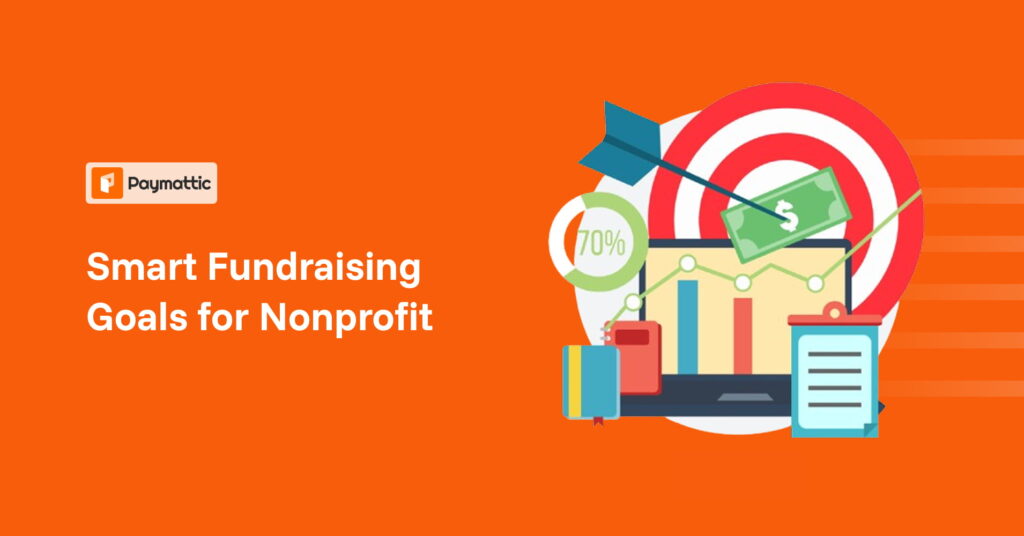


Leave a Reply